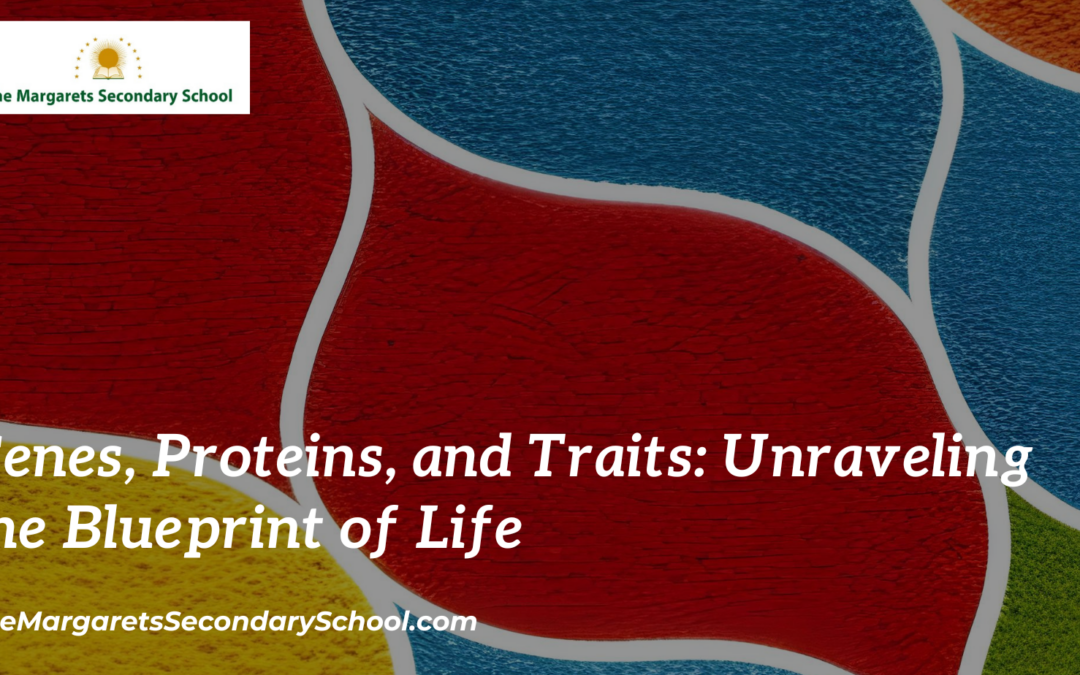Genes, Proteins, and Traits
The intricate web of life is woven with genetic threads that dictate not only our appearance and physical characteristics but also play a fundamental role in our health and well-being. At the core of this complex biological machinery are genes, proteins, and traits – the essential components that shape the diversity of life on Earth.
The Blueprint of Life: Genes
Genes are the molecular blueprints that carry the instructions for building and maintaining living organisms. Found within the DNA (deoxyribonucleic acid) molecule, genes encode the information necessary for synthesizing proteins – the workhorses of the cellular world. DNA is a double-stranded helix structure made up of four nucleotide bases: adenine (A), thymine (T), cytosine (C), and guanine (G). The sequence of these bases in a gene determines the specific instructions it carries.
Human beings have approximately 20,000-25,000 genes, each responsible for a particular function or trait. Genes are organized along chromosomes, and the human genome consists of 46 chromosomes grouped into 23 pairs – one set from each parent. These genes can be thought of as sentences in a book, where the words are the individual nucleotides and the sentences themselves form the instructions for creating proteins.
Building Blocks of Function: Proteins
Proteins are the molecular machines that perform most of the tasks in cells, tissues, and organs. These complex molecules are responsible for catalyzing biochemical reactions, providing structure to cells, transporting molecules, and enabling cellular communication. Proteins are composed of chains of amino acids, each folded into a specific 3D shape that determines its function.
The process of protein synthesis begins with the transcription of a gene’s DNA sequence into a complementary RNA (ribonucleic acid) sequence in a process known as transcription. This RNA molecule, called messenger RNA (mRNA), then exits the nucleus and travels to the ribosomes – the cellular structures where proteins are assembled. The ribosomes read the mRNA’s instructions and coordinate the assembly of amino acids in the correct sequence to form a protein through a process called translation.
The Phenotypic Tapestry: Traits
Traits are the observable characteristics of an organism – everything from eye color to disease susceptibility. These traits are a direct result of the proteins encoded by genes. While each gene contributes to a specific trait, many traits are influenced by multiple genes in complex ways. Traits are not solely determined by genetics; environmental factors also play a crucial role.
Understanding the relationship between genes and traits involves studying the genotype-phenotype relationship. Genotype refers to the genetic makeup of an organism, while phenotype refers to its observable characteristics. Genetic mutations, variations, and interactions contribute to the diversity of traits in a population. Some traits are controlled by a single gene (Mendelian traits), while others are influenced by multiple genes and environmental factors (polygenic traits).
Unraveling the Mysteries: Genetics and Beyond
The study of genes, proteins, and traits has led to remarkable advancements in fields like genetics, genomics, and personalized medicine. Researchers have developed techniques like gene editing, which allows for precise modification of DNA sequences, opening the door to potential treatments for genetic diseases. Genomic studies have uncovered insights into human evolution, migration, and disease susceptibility.
Additionally, the emergence of fields like epigenetics has revealed that gene expression can be influenced by factors beyond the DNA sequence, such as environmental influences and lifestyle choices. This dynamic interplay between genes, proteins, and traits highlights the complexity of life’s mechanisms.
In conclusion, the relationship between genes, proteins, and traits forms the foundation of biological diversity and complexity. Genes serve as the instructional codes for building proteins, which, in turn, shape the observable traits of an organism. The journey of discovery in this field continues to unravel the intricacies of life’s blueprint, offering insights that have the potential to transform our understanding of health, evolution, and the very nature of existence.





